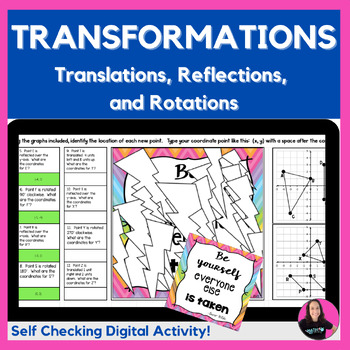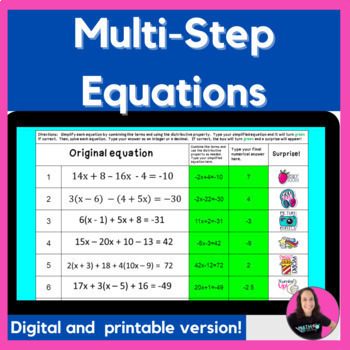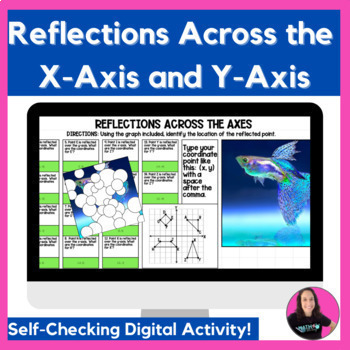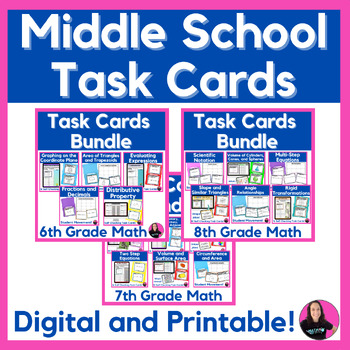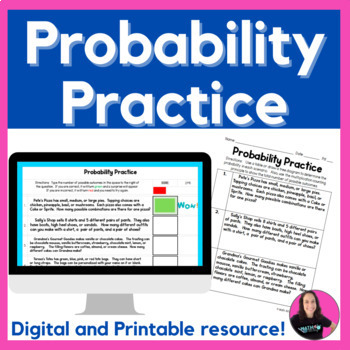Estimation is one of those math skills that students often overlook—until they realize how often they use it in real life. We often find ourselves figuring out if we have enough money for snacks, estimating the time left in a movie, or determining how many jellybeans we can fit in our mouths after a rough day at work. Estimation is a skill students will carry into adulthood.
Unfortunately, many students struggle with estimation because they think math is all about exact answers. But estimation is about reasonableness, not perfection, and it can be a fun, low-pressure way to build number sense. That’s why Estimation Stations are such a hit in the classroom.
These interactive, hands-on math classroom activities for estimation help students develop their estimation skills while keeping them engaged. If you’re looking for an easy way to get students excited about estimation, read on for instructions on setting up the ultimate Estimation Stations in your classroom.
Why Are Estimation Stations Important?
Estimation is more than just making a guess—it requires critical thinking, number sense, and logical reasoning. When students practice estimation, they improve their ability to:
Make quick mental calculations
Identify reasonable answers instead of relying on a calculator
Strengthen their understanding of place value, measurement, and proportion
Develop problem-solving strategies for real-world situations
By incorporating Estimation Stations into your classroom, you can help students build confidence in math while making learning feel like a game.
How to Set Up Estimation Stations
Estimation Stations work just like math centers—students rotate through different challenges, each focused on a different aspect of estimation. You can keep it simple or add some friendly competition to make it even more exciting.
 |
Steps to Set Up Your Stations:
Choose Your Materials – Everyday classroom items like marbles, cotton balls, and paper clips work great. Seasonal items like candy hearts or mini pumpkins add variety.
Create a Recording Sheet – Students should write down their estimates before checking the actual amount.
Encourage Discussion – Have students explain their reasoning before they measure, count, or check their answers.
Make It Competitive (Optional) – A small prize for the most reasonable estimates can boost engagement.
 |
| Estimation Guessing Slips and Certificates |
Different Ways to Display an Estimation Station
Setting up Estimation Stations can be as simple or creative as you like. A classic option is to use a clear jar or container filled with small objects like marbles, cotton balls, or mini erasers. Place the jar or container in a central location, and let students write down their guesses on slips of paper or a whiteboard. Make sure to have a place where students can place their guesses! I love this container from Amazon.
 |
| Estimation Station with Guess Slips |
If you want a more interactive approach, try a bulletin board display. Instead of using physical objects, post a printout with images of items like pencils, coins, or dice. Students can make their estimates and record them on sticky notes or a designated answer sheet.
 |
| Estimation Bulletin Board Set |
Another great option is a digital estimation station, especially for classrooms with limited space. Display an image on a projector or interactive whiteboard, and have students submit their guesses through a class poll or Google Form.
 |
| Estimation Station Bulletin Board |
Rotating different display methods throughout the year keeps students engaged and excited to participate in estimation challenges.
The Best Estimation Stations for Your Classroom
Estimation is an important math skill that helps students develop number sense, logical reasoning, and problem-solving abilities.
But I’m not gonna lie—traditional estimation exercises can feel a little dull. That’s why I started to create estimation stations.
These interactive activities turn estimation into a challenge that students actually enjoy, which is not an easy task! Below are some of the best Estimation Stations to keep your students thinking and engaged!
How Many Are in the Jar? (Estimating Quantities)
One of the simplest yet most engaging estimation activities is filling jars with different objects and having students estimate how many are inside.
Materials: Clear jars filled with cotton balls, marbles, candy hearts, pom-poms, or mini erasers.
Activity: Students guess the number of objects in each jar, write down their estimate and then count them to check. Use jars of different sizes or add small and large items to make estimation trickier.
Students often struggle with estimating measurements, so this station helps them develop a sense of scale.
Materials: Rulers, measuring tapes, pencils, paper clips, and markers.
Activity: Place objects around the room and have students estimate their lengths before measuring. Have students estimate the combined length of two or more objects.
Which Is Heavier? (Estimating Weight)
Many students have trouble conceptualizing weight, so this station helps them practice estimating grams and ounces.
Materials: Small bags of rice, books, staplers, water bottles, and classroom supplies.
Activity: Students estimate the weight of each item before using a scale to check. Ask students to rank objects from lightest to heaviest based only on their estimates.
How Much Will It Hold? (Estimating Volume)
This activity helps students visualize and estimate liquid capacity.
Materials: Cups, water bottles, small containers, and a measuring cup.
Activity: Students estimate how many milliliters (or cups) of water each container can hold before measuring. Ask students to compare two containers and predict which holds more.
What’s the Total? (Estimating Money)
Students love estimating money, and this activity gives them real-world practice.
Materials: Play money, real coins, or printed images of bills.
Activity: Students estimate the total value of a handful of coins or bills before counting. Have students round their total to the nearest dollar before adding it up.
.JPG) |
| Estimation Station on Bulletin Board |
How Long Will It Take? (Estimating Time)
Time estimation is a skill students use daily but rarely think about. This station makes it fun.
Materials: Stopwatch or timer.
Activity: Students estimate how long it will take to complete simple tasks, like writing their name five times or stacking blocks. Then, they time themselves to see how close they were.
Let students create their own time-based challenges for classmates.
Why Estimation Stations Work
Estimation Stations aren’t just fun. They help students develop stronger number sense and mental math skills. By practicing estimation in a hands-on way, students learn to make reasonable guesses, refine their mathematical thinking, and build confidence in their abilities.
Estimation has countless real-world applications beyond the classroom, from budgeting money to measuring ingredients in cooking. When students see its value in everyday life, they become more engaged in learning.
If you’re looking for a way to make estimation more exciting in your middle school math classroom, give Estimation Stations a try. Your students will love the interactive challenges, and you’ll love watching them develop stronger math intuition.
Have you tried Estimation Stations before? What’s your favorite estimation activity? Share your ideas in the comments!







